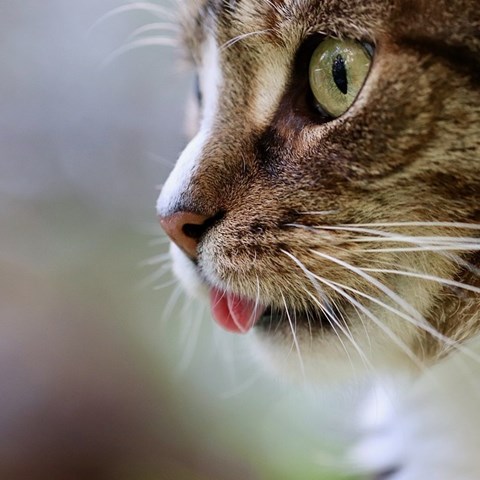Contact
Sofia Hanås
PhD student at the Department of Clinical Sciences (KV)
E-mail: sofia.hanas@slu.se

Measured indirect blood pressure (BP) results in cats in a clinical environment might be affected by stress and characteristics of the cats. The aim of the present study was to investigate the influence of clinical setting, cat characteristics, and life situation on BP and pulse rate (PR) in healthy cats.
Ninety-four healthy Domestic Shorthair, Birman and Norwegian Forest cats. Blood pressure measured by high-definition oscillometry in 3 settings: cat placed in its own carrier with veterinarian present; cat placed in carrier with owner alone present; and cat placed on table with veterinarian present. Statistical analyses were performed using mixed linear models.
Systolic BP (SBP) did not differ among settings. Higher mean arterial pressure (MAP), diastolic BP (DBP), and PR were found when measurements were performed with cat placed on table, rather than in carrier. Coefficients of variation (CVs) higher for SBP, MAP, DBP, and PR when measured with cat placed on table than in carrier. Birman cats had lower BP than other breeds. Systolic BP, MAP, DBP, and PR increased with age. Cats allowed outdoors had lower PR than cats living strictly indoors.
No difference in SBP was found among settings, but measuring BP with the cat placed on the examination table gave higher MAP, DBP, PR, and CV than measuring BP with the cat in its carrier. Breed affected BP, with lower BP in Birman cats than other breeds. Blood pressure increased with age. Pulse rate was lower in cats allowed outdoors than cats living strictly indoors.
https://doi.org/10.1111/jvim.16096
Hanås S, Holst BS, Ljungvall I, Tidholm A, Olsson U, Häggström J, Höglund K. "Influence of clinical setting and cat characteristics on indirectly measured blood pressure and pulse rate in healthy Birman, Norwegian Forest, and Domestic Shorthair cats". J Vet Intern Med. 2021.
Sofia Hanås
PhD student at the Department of Clinical Sciences (KV)
E-mail: sofia.hanas@slu.se